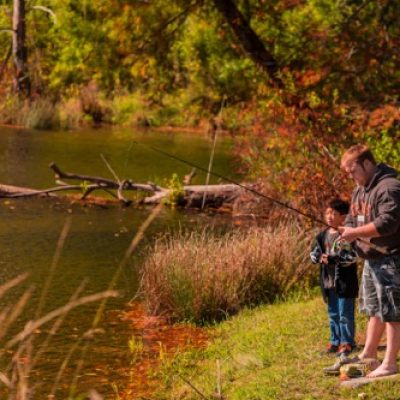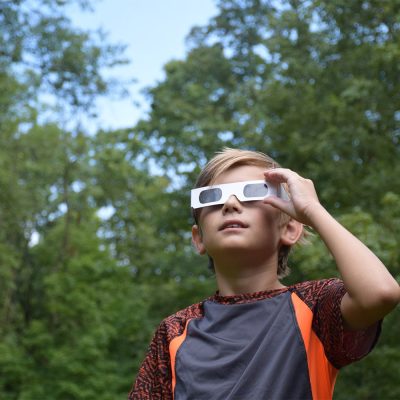With over 327 different bird species identified county-wide, Beavers Bend is Oklahoma’s premiere spot for bird-watching. Beavers Bend’s marshy terrain, tall pines, and wealth of public land afford its birders rare glimpses of uncommon coastal species rarely found in the central US—all from one location.
Free guide services ensure birders tick a few birds off state, year, and life lists, and Beavers Bend’s luxury cabins make trekking out in the early morning or wading through the waters in the mid-afternoon all worth it in the end. Indeed, there’s no better place to relax after a birding marathon.
In springtime, Beavers Bend’s close proximity to the Gulf Coast gives you a front-row seat for the great migration. Many birds—coastal gulf birds, wading birds, and others—come up through Mexico, flying straight across the Gulf of Mexico.
On rainy nights, thunderstorms might force birds out of the sky and into the trees. During these fallouts, Beavers Bend’s trees sparkle with brightly colored warblers. If you’re lucky enough to be here after a fallout, expect to see all kinds of rarities you wouldn’t otherwise catch.
Whether you visit in the warmer months or prefer to peep the winter birds, there’s plenty to scout out and photograph in Beavers Bend. Here are ten birds you definitely shouldn’t miss.
1. The Purple Gallinule.
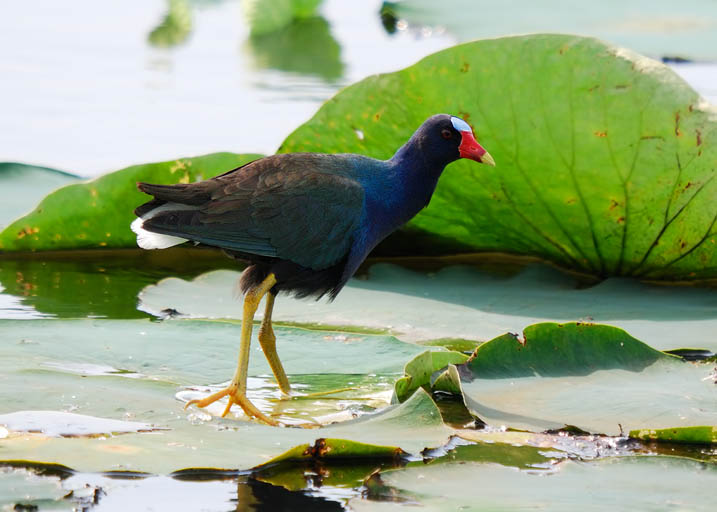
This shy swamp hen hangs out in Beavers Bend’s marshiest areas. Catch it strutting around on lily pads, proudly displaying its blue, red, yellow, and green shades. With large, long toes, it’s able to prance without sinking into the water. Other notable features include a big, white, cotton-ball tail that puffs out from time to time. The Purple Gallinule has slowly built up its numbers in Beavers Bend, making it one of the area’s most sought-after species.
2. The Brown-headed Nuthatch.
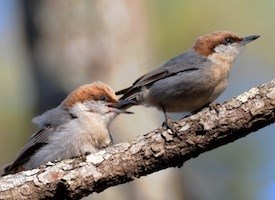
One of the least numerous of its kind in North America, the Brown-headed Nuthatch’s presence in Beavers Bend is due largely to this small bird’s preference for the pines found in Beavers Bend. For a chance to see a Brown-headed Nuthatch here, head to the Tiak Work Center near Haworth. You may also spot them near the Forest Service Visitor Center and the Broken Bow Lake spillway. Brown-headed Nuthatches are found only in the extreme southeastern corner of Oklahoma, making Beavers Bend a premier spot for scouting them in the state.
3. Red-cockaded Woodpecker.
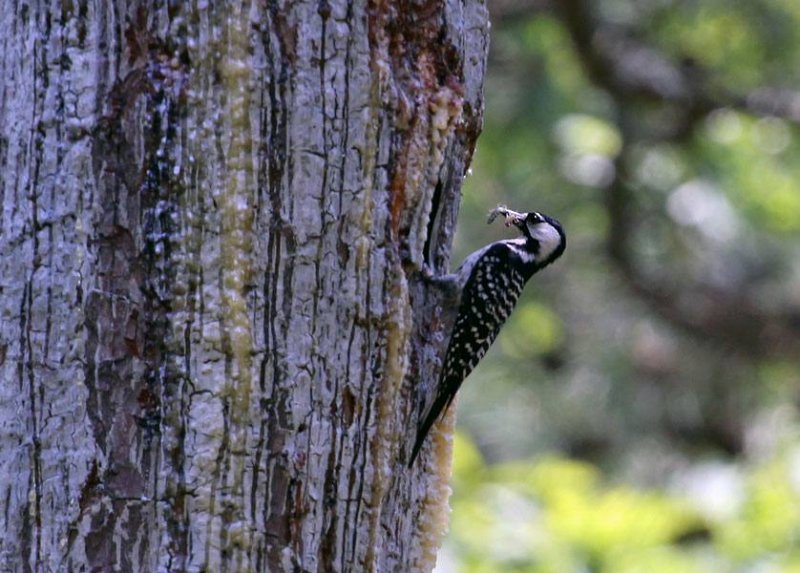
Though it’s now on the endangered species list, the Red-cockaded Woodpecker has long called Beavers Bend home. These rare birds make themselves at home in the soft bark of Beavers Bend’s pine trees. To sneak a glimpse of them, head over to the boat ramp in the Wilderness Area at the north end of Broken Bow Lake. Your best bet? Make plans to attend the annual Red Slough Birding Convention in the spring for a front row view (hint: you’re almost guaranteed to find one with this crowd).
4. The Yellow Rail.
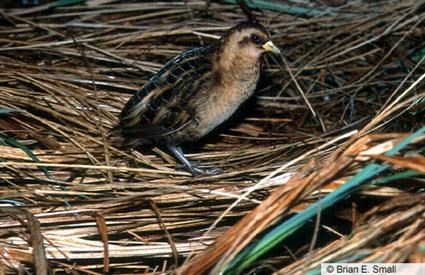
A small, stealthy marsh rail, the Yellow Rail is a tough bird to catch, but its subtle streaks, white wing patches and yellow-brown breast make it worth the wait. In fall, the Yellow Rail migrates to Beavers Bend from Canada. This secretive bird likes to lurk in grassy fields, and often needs some coaxing out by birding guides to make his grand appearance. Thanks to their covert nature, Yellow Rails are widely regarded as one of the top ten most wanted life birds in the country.
5. The King Rail.
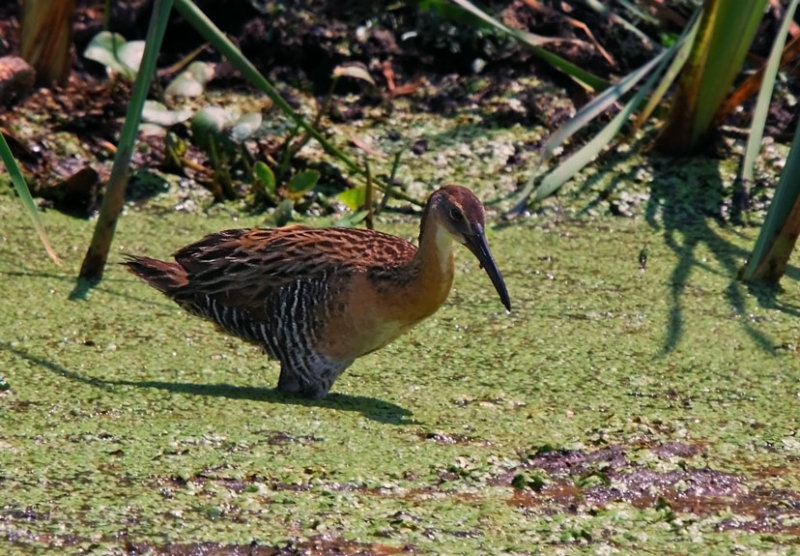
As one of the larger North American rail, the King Rail earns its name. This waterbird loves to hang out in the marshes of the Red Slough, though it can be tough to find. A notoriously secretive bird, the King Rail prefers to stay out of sight. Beavers Bend guides can help birdwatchers see the King Rail’s distinct rusty-brown face, dark brown cap, white throat, and long, curved bill. Beavers Bend birders usually have the highest chance of spotting a King Rail in spring months, especially in May.
6. The Anhinga.
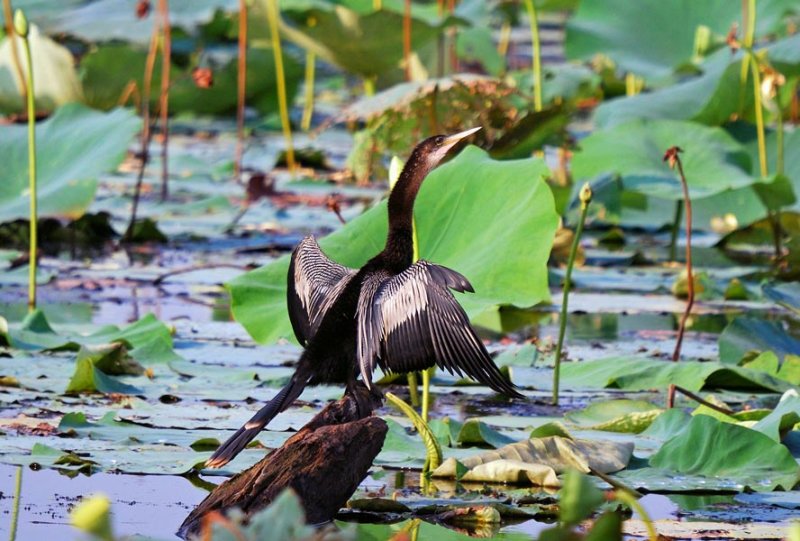
Famously found in southern swamps, the Anhinga is a real regular around the Red Slough. The Anhinga’s swimming habits have also earned it the nickname ‘Water Turkey,’ thanks in large part to its long neck and broad tail. It’s also known by birders as the ‘Snake Bird,’ due to its tendency to swim through the swamps with just its head and neck above the water. Thanks to Beavers Bend’s marshy wetlands, Anhingas have made themselves at home in the Red Slough, and are commonly sighted during birdwatching trips.
7. Painted Bunting.
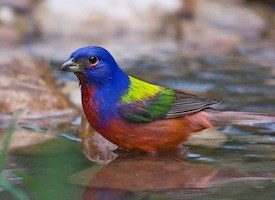
This secretive singer can be so visually striking that it is sometimes called the “Nonpariel,” unrivaled in its vivid fusion of bright colors. A member of the finch family, Painted Buntings can still be a challenge to spot in the wild as they like to hide in the dense brush or the understory of the forests as they forage for seeds. The good news? They also like to hang out around Beavers Bend’s Red Slough parking areas.
8. Prothonotary Warbler

This happy songbird is named for the yellow-robed clerks of the Roman Catholic church. Its bright golden breast is framed by its blue-gray wings and accented by its black eyes and long, dark bill. It nests in the forest, foraging for insects like moths, mayflies and spiders. In Beavers Bend, this large (not large) warbler has even been known to fly in a birdwatcher’s van, sit on the steering wheel, and sing the birder a song. True story.
9. Swainson’s Warbler.
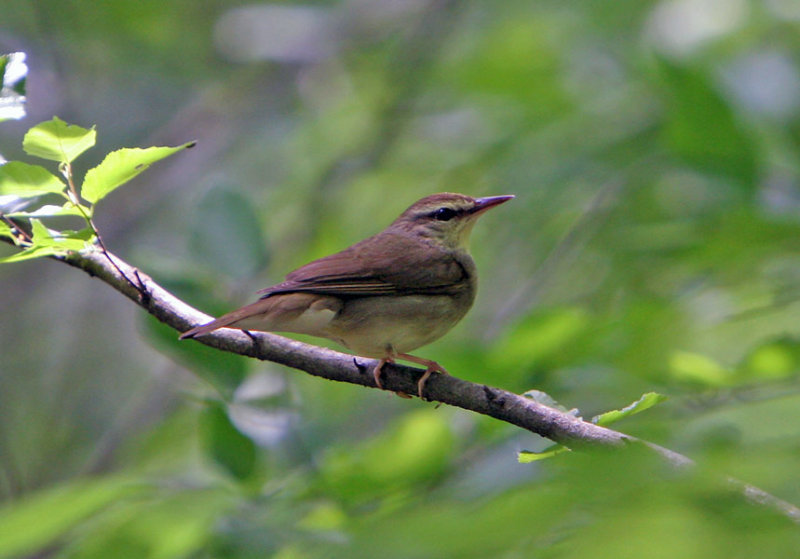
One of the most secretive and least observed of all North American birds, the Swainson’s Warbler has a penchant for the thick understory of the Little River Conservation District in Beavers Bend. Good thing this shy warbler has a big voice and loves to sing. Otherwise, you might miss this special little bird entirely as he flies through the forest, eating all kinds of Beavers Bend insects as he goes.
10. Black-bellied Whistling Duck
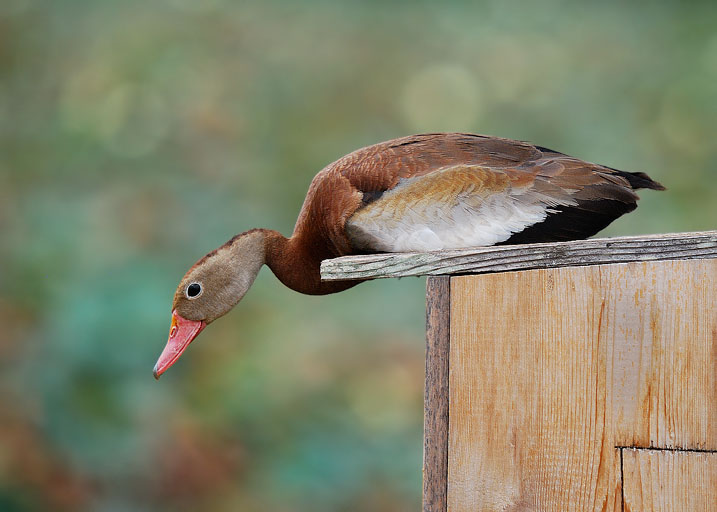
Sociable and noisy, this waterfowl is just what its name suggests. The duck has a signature black belly, and whistles while it works. Perhaps this jolly outlook is partly why it often mates for life. You can find these boisterous fellows in the freshwater ponds and marshes of Beavers Bend.
There are 327 species of birds to see in the fields, forests, marshes and ponds of Beavers Bend. Guess you’ll just have to book several return trips to catch them all. The very best time is to visit during the Red Slough Birding Convention, scheduled this year for May 6-9, 2017. You still have time to book a guided tour. Head this way to check out a sweet cabin to stay in while you’re here.





